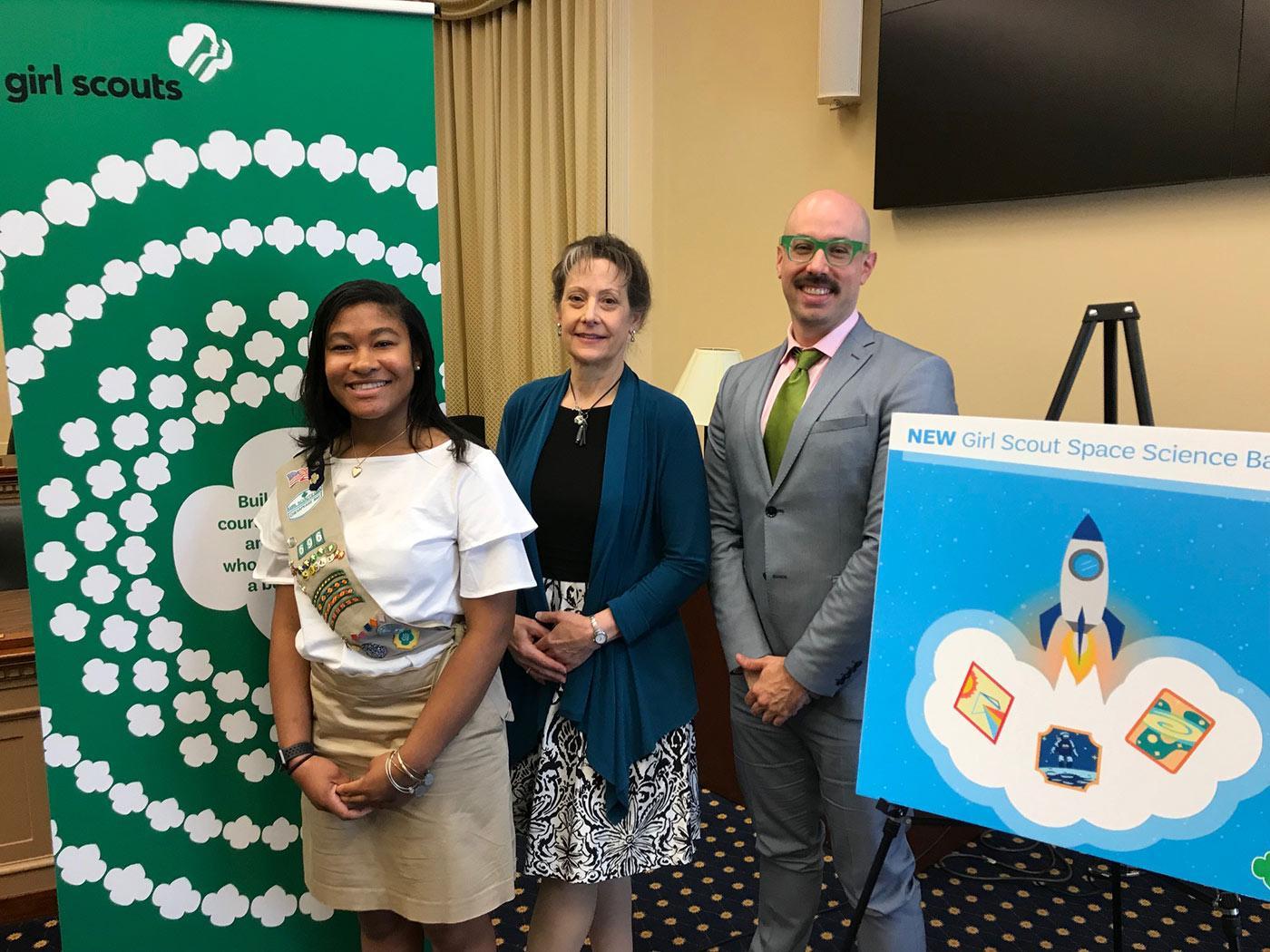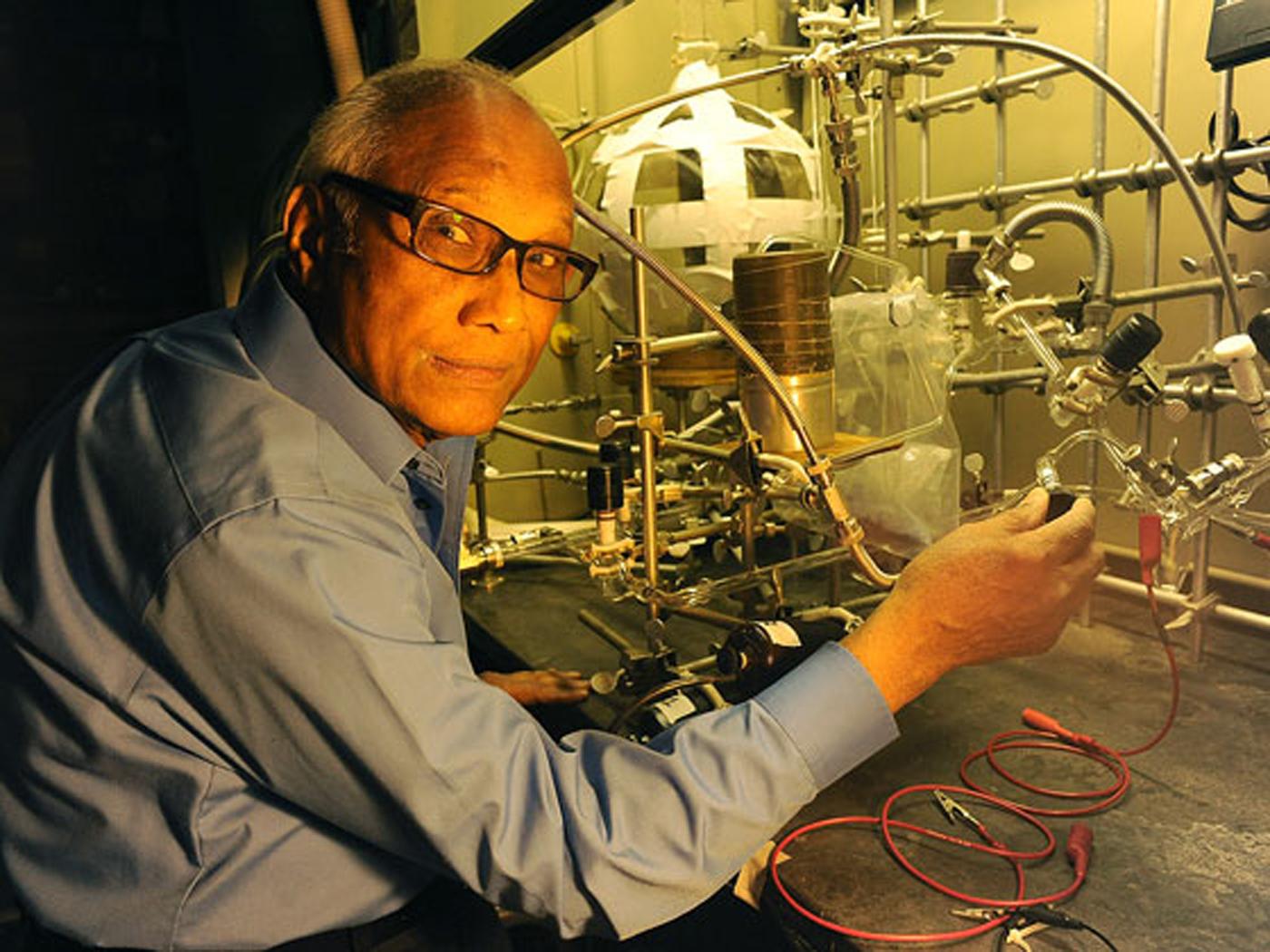
Eos featured a story about the new STEM-focused Girl Scouts USA (GSUSA) badges. The SETI Institute developed the three space science badges for Girl Scouts in grades 6-12. The badges are part of the SETI Institute's Reaching for the Stars: NASA Science for Girl Scouts program which is funded by NASA's Science Mission Directorate. Pamela Harman, the SETI Institute Director of Education, traveled to a Washington D.C. event featuring members of Congress, GSUSA leaders, and others discussing the importance of women’s contributions to science fields:
“Women are still vastly underrepresented in STEM fields,” said SETI Institute Director of Education Pamela Harman. “Exposing girls to these subjects in multiple formats and at different venues is vital to ignite their curiosity and to close this gap.”
Reaching for the Stars provides Girl Scouts with opportunities to engage in space exploration and astronomy in exciting and accessible ways. Learn more at SETI.org.
- Eos: Girl Scouts Emphasize STEM Education
- SETI.org: Girl Scouts USA and SETI Institute Join Capitol Hill Panel to Discuss Engaging Girls in Space Science
- SETI.org: SETI Institute Collaborates with Girl Scouts to Develop New Space Science Badges
- SETI.org: Girl Scout Bridging 2019
 Disruption and Vision
Disruption and VisionBill Diamond, president and CEO of the SETI Institute, wrote a commentary for Billionaire Magazine extolling the visionary creators of disruptive technology. Diamond noted the SETI Institute’s mission to explore the nature, origin, and evolution of life in the Universe is tied directly to life on this planet, which he calls. “The most important laboratory we have for this endeavor.” Past innovations, Diamond remarks, have had an incredible impact, but have also disrupted the planet to a destructive degree:
We understand that even slight changes to the delicate balance of climate conditions that support life can have profound implications for habitability. We are thus at a point in our history where we need a new kind of visionary. We need individuals who can imagine a future that many of us don't want to see and then create disruptive technologies to prevent it. Bold leadership and daring innovation will be required to avert global catastrophe.
The Earth, our one and only home, is precious.
- Billionaire: COMMENT: The Kind of Visionary The World Needs Now
 Bishun Khare’s Crater on Pluto
Bishun Khare’s Crater on PlutoBishun Khare, a late research scientist who worked at the SETI Institute and NASA Ames Research Center, is the namesake of the Khare Crater on Pluto. The Logical Indian celebrated his contributions to science, noting that he worked with the famed Carl Sagan in the 1970s on experiments using water and atmospheric gases to produce amino acids. These experiments were based on earlier ones performed at the University of Chicago and showed that amino acids might have formed in the atmosphere of Earth when the planet was young.
Khare passed away in 2013.
- The Logical Indian: Bishun Khare: The Little Known Indian Scientist Who Has A Pluto Crater Named After Him
- SETI.org: Bishun Khare
 Franck Marchis Bringing the Sky Down to Earth on 2SER
Franck Marchis Bringing the Sky Down to Earth on 2SERSETI Institute Senior Planetary Astronomer Franck Marchis appeared on 2SER, a community radio station in Sydney, Australia. Marchis spoke about his work with SETI Institute and his role as the chief science officer for Unistellar. Unistellar is developing low cost, digital telescopes to allow amateur skywatchers to take part in detailed observations of stars and astronomical phenomena.
- 2SER: Dr. Franck Marchis Gazing into Space - 2ser
- SETI.org: Unistellar and the SETI Institute - A partnership for citizen science
In last week’s episode, explore the ecosystem that is your immune system in Granting Immunity. In our previous week’s episode, imagine the future with help from Hollywood in an encore episode of Sci-Fi From the Future.
Last time on Facebook Live, a discussion between NASA researcher Jon Jenkins and SETI Institute Astronomer Franck Marchis about the TESS spacecraft and its recent discoveries. Videos of all past Facebook Live videos are on our Facebook page: https://www.facebook.com/SETIInstitute/





